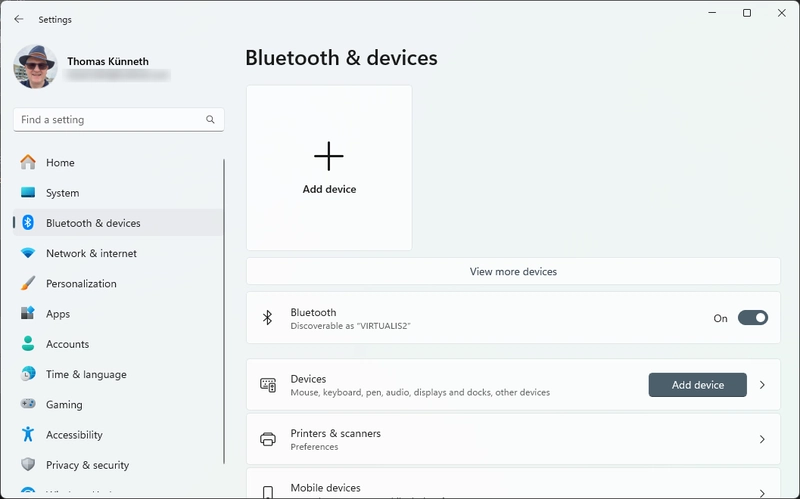At the time of writing this article, there (still) is no official Quick Share implementation for macOS. While there is an open source app that partially implements the underlying protocol, and while there certainly are quite a few excellent alternate file sharing solutions, you still may want (or have) to rely on Google's version.
The Windows version obviously won't work on your Mac, but it may very well work inside a virtualized Windows guest.
So what is happening there? I am using Parallels Desktop, which allows you to run an authorized (that is, licensed and activated) version of Windows 11 for ARM. Having a Windows environment available on your Mac may come in handy for several reasons. My personal favorites are:
- testing Compose Desktop apps
- occasionally play some PC-only games
- use apps that are not available natively on macOS, which, at the time of writing, was the case for Quick Share
Testing Compose Desktop apps has been a game changer for me, and I will be writing about this, too. For now, let's focus on Quick Share. And virtualization. But first, a short disclaimer. I am not advocating a specific product. There are several virtualization packages on macOS. And they all have their strengths. It just happened that I once tried Parallels and liked it, so I stayed. But what I am going to describe, will likely be working on other products, too.
Before Apple switched to Apple Silicon, Macs were powered by Intel chips. Well, and before that, still others. Anyway, when a virtualization software virtualizes an environment with the same processor architecture, there, inevitably, is less emulation needed than when it also needs to simulate the processor. Those packages still have to do crazy, mind-blowing stuff. But a lot of code can run natively, given that the underlying processor supports virtualization. This is the case for modern Intel and AMD chips. However, current Apple Silicon chips have only limited support for running virtualized Intel/AMD operating systems. While Apple does provide a virtualization layer called Rosetta 2, running an x86/x64 version of Windows is - at the time of writing - not easily possible. That's why Parallels relies on Windows for ARM. This version is usually run on ARM-PCs. Now, you may be thinking: What about software compatibility? Windows for ARM has its own emulation layer, which allows users to run many x86/x64 programs.
Let's turn to Quick Share. The official Google Quick Share application for Windows is compatible with 64-bit versions of Windows 10 and up. Importantly, it also supports ARM-based PCs running Windows 11 and up. Since Quick Share leverages both Bluetooth and Wi-Fi for file transfer, you'll need to ensure both are enabled and working on your virtualized Windows PC and the Android device.
Using Parallels, Bluetooth is activated from the menu bar (Devices / USB & Bluetooth / Configure).
Next, check if Bluetooth is enabled and if your virtual machine is discoverable.
Wi-Fi required a little more thought to make Quick Share work. Specifically, the Network settings should look like this:
Source needs to be set to Wi-Fi rather than Shared Network, which is the default and recommended setting.
While that's basically it, let me show you a few screenshots from the Windows app:
In its settings, you can specify where received files are saved. Since you can share macOS folders with the virtual Windows, it may sound like a good idea to use such folders. Unfortunately, this did not work for me. While the file was briefly visible, it vanished shortly after. Using a folder inside the Windows guest fortunately works like a charm.
In the main section, you can easily change who can send you files. If the main window is closed, this setting is also available from the system tray:
Wrap-up
I have an instance of Windows basically running all the time, since I do a lot of Compose Multiplatform / Compose Desktop coding. No, it's not because of games 🤣. Anyway, for my setup, receiving Quick Share files there and moving them to native Mac folders manually is a decent enough workflow to keep it. Granted, a native macOS version is still overdue. At least, Google could fix the "not being able to save files in networked folders" issue.
What are your thoughts on this? Please share them in the comments.










Top comments (3)
Today I added two screenshots that illustrate how to check if Bluetooth is switched on and if the device is discoverable.
You can use neardrop in case you just need the functionality of quick share
Thanks for commenting. That‘s exactly what I was referring to when I said
I did not go into this because this quick tip is for people who want or have to use Google‘s offering